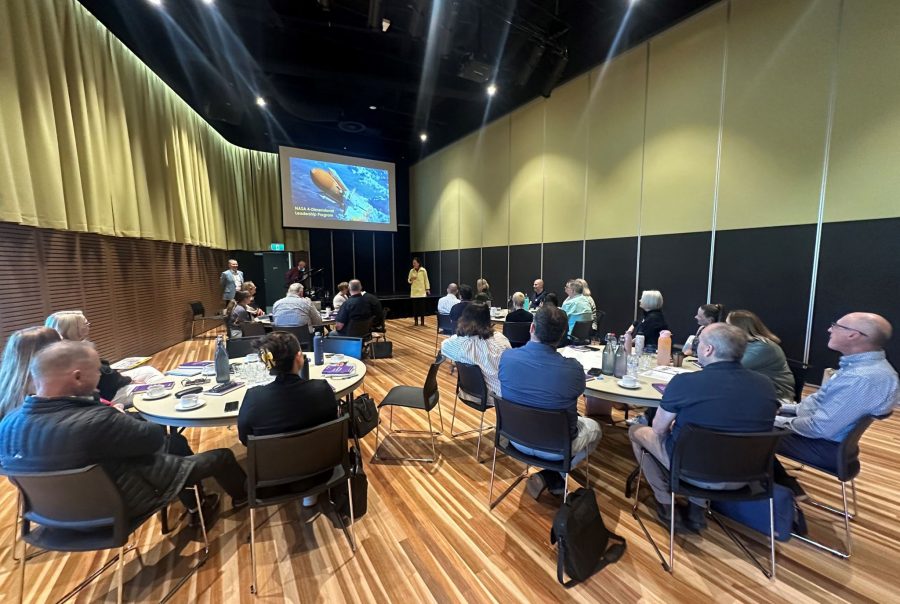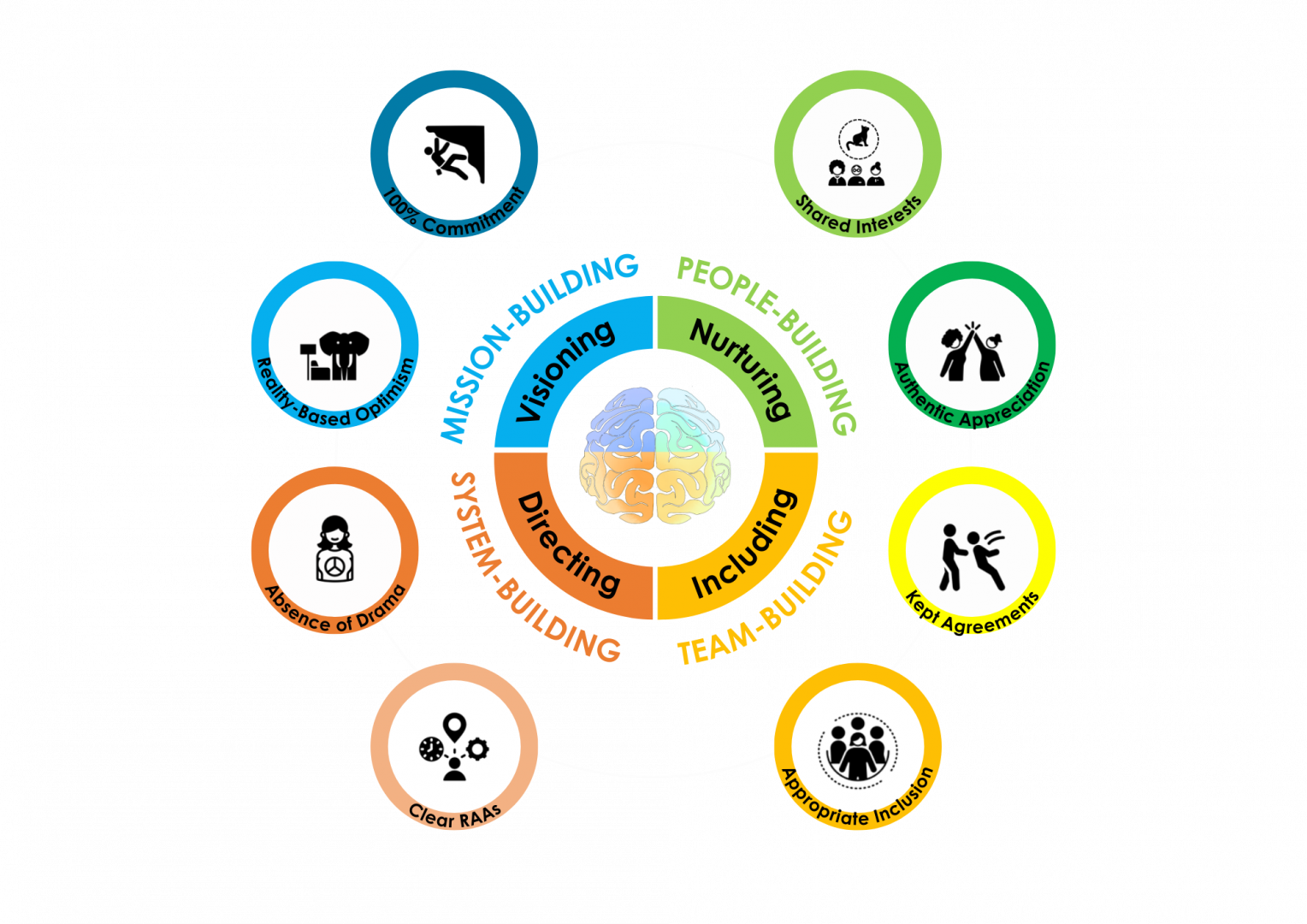NASA 4-D LEADERSHIP PROGRAM GOES NEXT LEVEL

When Crazy Might Work acquired permissions to run the Four-Dimensional Leadership (‘4-D’) program used by NASA, it saw the opportunity to take a great program to the next level. Developed by NASA’s Director of Astrophysics, Charlie Pellerin, in the wake of failed missions and shuttle disasters, the 4-D program has become a benchmark for leadership development, both in NASA and around the world. Since inception, the program has been voluntarily completed by over 1,500 NASA teams, contributing to NASA being named Best Place to Work in US government for the twelfth year in a row (May, 2024).
Outside of NASA, the program has been embraced by over 100,000 public and private sector leaders in over 75 countries over the past two decades. But, despite its popularity and enviable track record, the NASA 4-D program was starting to date. A product of leadership training as it existed in the early 2000’s, NASA 4-D was in need of an update when Crazy Might Work received permission to run the program in 2021. In the words of Chief Combobulator, Paul Hawkins, “The fundamental 4-D program structure was sound and we were immediately struck by how well it aligned with contemporary social neuroscience and leadership research. It was well ahead of its time in that it established psychological safety as a precursor for high performance, but it needed a learning design face lift and some content updates from the current space program.”
The Artemis and Moon to Mars programs have forever changed expectations about the selection criteria, as well as the social and psychological conditioning of astronauts, as teams embark on multi-year space missions. The recent European Space Agency (ESA) astronaut election process, for example, selected only 17 candidates (including one person with disability) from over 22,500 stellar applicants. The criteria for selection have changed irrevocably, with an emphasis on the ability to self-regulate, cooperative traits and research capability. For example, the ability to process ‘failure’ (along with the associated emotions of frustration and feelings of incompetence) becomes critical when selecting candidates to routinely do what no other human being has ever attempted.
Studies conducted by NASA and the ESA in astronaut training analogs like Antarctica have also challenged how we think about leadership, team cohesion and high performance. Studies like NASA’s multi-year ICE (Isolation, Confinement and Extreme conditions) study, for example, looked at the role of leadership in team dynamics, as candidate astronauts ‘over-wintered’ in Antarctica, under conditions approximating a Moon or Mars settlement. They have highlighted the importance of a leader’s ability to promote social connections across a group to prevent it splintering under stress.
The new look NASA 4-D program incorporates these and other unique learnings, extracted from research undertaken at the frontiers of human endeavour, making the 4-D program a leadership and team development experience like no other. In a parallel mission that approximates the Artemis and Moon to Mars preparation, leaders learn lessons that are not from the classroom and the course attracts participants from around the world, including senior leaders from the military, law enforcement, corporations, universities and not-for-profits:
“Having studied Leadership for many years, the NASA 4-D Leadership Program was an amazing life changing journey, helping me to build better teams and navigate the most hostile environments I could imagine. The program brought together a group of intelligent professionals and challenged them to see the world differently. The logical pathway from building people to developing them into a team and designing strong systems to create the ideas to drive progress makes sense and I have been applying it to my everyday life. I can’t highly recommend this excellent program enough. Now I just need my own rocket!” – Former Commander, Raptor Squad (Australian Organised Crime Unit)
“The NASA 4-D leadership course came at a perfect time for me as I’m building a new team and I was able to immediately use the lessons and tools. I felt we were already on track to become a high performing team, but this course gave ownership to our individual team members and I think that will make us a high performing team for a very long time. The course materials were relevant, professional, and engaging and I enjoyed learning about my incredible classmates’ challenges. Though the class was virtual, I really felt connected through the discussion and exercises.” – Major, US Military
“The NASA 4-D Leadership Program is truly unique as it helps leaders understand and then shape their context through the application of 8 key behaviours. The upfront leadership benchmarking provided the important baseline from which to build, whilst the exercises were engaging and unique. Who doesn’t want to pretend they’re an astronaut for a day or so? 4-D was an investment in self-development and inspiration, and one that I would recommend to other leaders wishing to build high performing teams.” – Chief Technology Officer, Australian listed property group
The NASA system introduces eight neurogenetic behaviours to establish trust and psychological safety as a foundation for high performance. What makes these behaviours different to others (such as those developed from psychometric factors, or organisational values) is that they are based on contemporary social neuroscience and therefore universally relevant in human interactions.

The program develops eight leadership capabilities and candidates must apply all eight to a work or social situation to earn digital accreditation. They are:
- 1. Connect a team and create a sense of shared purpose.
- 2. Develop individuals relative to their idiosyncratic strengths.
- 3. Set and maintain individual boundaries and team standards.
- 4. Include appropriately, whilst avoiding over-inclusion.
- 5. Align role, accountability and authority to maximise autonomy.
- 6. Challenge dysfunctional beliefs with radical candour.
- 7. Acknowledge uncomfortable truths and drive optimistic change.
- 8. Co-create a compelling vision and communicate it effectively.
If you are ready to make your leadership extraordinary, based on learnings from the current space program and neuroscientific research, the next online public program kicks off on Friday, 25 October 2024 at 12:00pm (AEST). Thereafter, it runs for two hours each week, over eight consecutive weeks each Thursday. The sought-after 4-D accreditation comes in the form of a digital badge that can be pinned to your LinkedIn profile. REGISTER HERE
For organisations preferring to run the program internally, the program can be tailored to your culture and operating cadence, with the option to benchmark (pre and post program) against 1,500 NASA teams.
For more information on this option, please contact rosanna@crazymightwork.com
If you would like to learn more, follow the registration link above, or listen to this recent interview of Paul Hawkins by Adam Thorn at the Australian Space Summit & Exhibition (May 2024). In this podcast interview, Paul describes the revamped program and how it has been transformative for organisations. LISTEN HERE
Want original, well-researched articles like this on a monthly basis? Sign up for our newsletter. Subscribe and share below!


